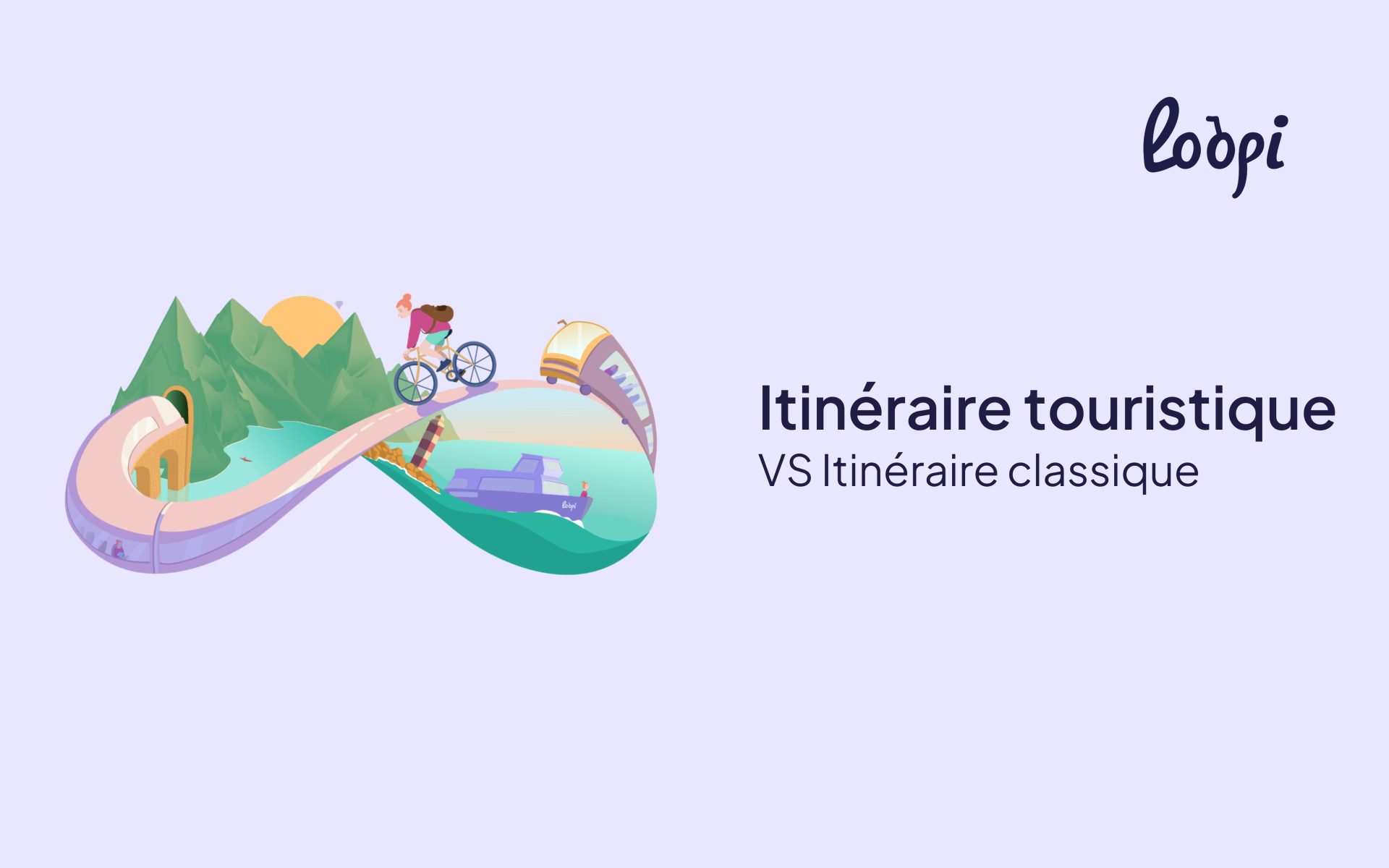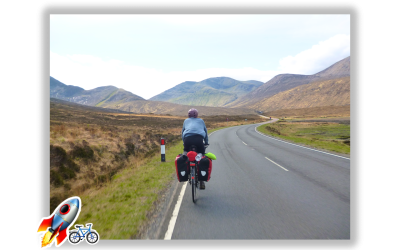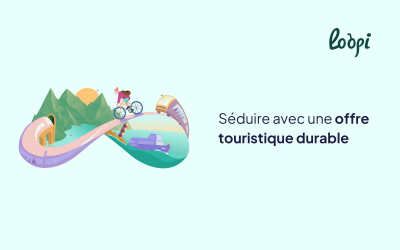On vacation, our expectations around transport take on a whole new meaning. While in our daily lives we aim to move quickly and efficiently from point A to point B, holidays invite us to slow down and seek a richer, more fulfilling experience.
The concept of MaaS (Mobility as a Service), which simplifies trip planning and payment through a single platform, fits perfectly with daily mobility needs. However, it struggles to meet the expectations of vacationers, who aren’t necessarily looking for the fastest route. That’s where the distinction lies between the needs of a traditional itinerary and those of a tourist itinerary.
And that’s exactly where Tourism MaaS comes in. Optimized for the needs of travelers on vacation who want to take their time and explore, it’s a tool designed to complement the everyday MaaS we’re already familiar with.
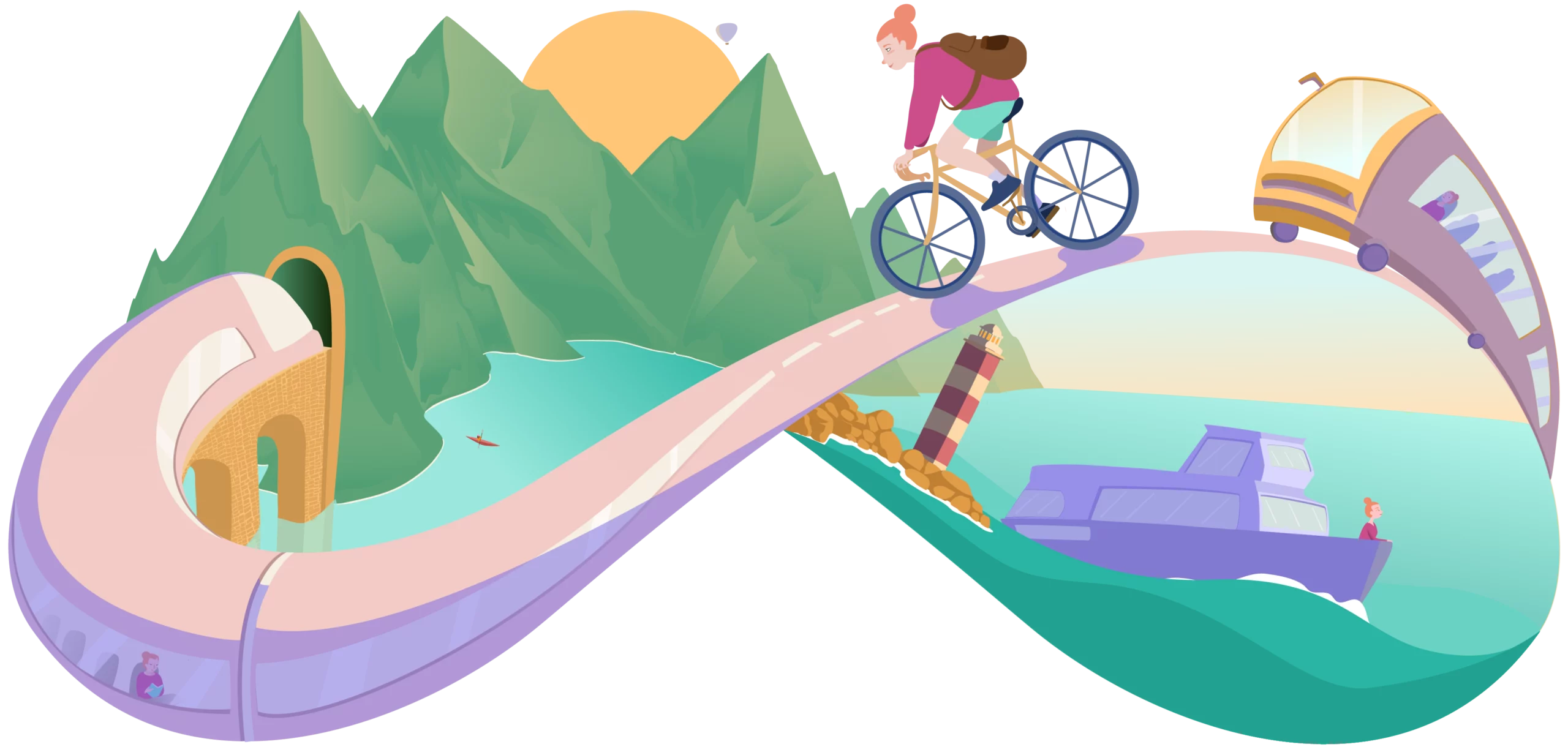
Two different tools = One shared logic
Two complementary revolutions in mobility
Traditional MaaS: A revolution in everyday mobility
Launched in 2017 in Helsinki, MaaS revolutionized mobility. Simplicity and cost-effectiveness were the key drivers behind the development of this new tool. By integrating various modes of transport—carpooling, bikes, buses, trams, subways—MaaS reimagined travel by placing soft mobility at the heart of every journey.
Bien qu’il soit présent en France depuis plus de six ans, certains se demandent encore ce que cela signifie concrètement. Pour faire simple, des entreprises comme la SNCF et la RATP sont des exemples parfaits de l’intégration du MaaS.
To name just a few examples, there’s the “Star” app from SNCF, launched in 2018 in Dijon and Rennes, which allows users to view all city transport options and see real-time parking space availability. Almost makes you want to try some of that famous Dijon mustard or Rennes-style pâté, doesn’t it? Today, a single platform allows users to view intermodal routes, check schedules, search for journeys, and even buy tickets. Later on, Mulhouse and Saint-Étienne introduced “Moovizy”, while “TAC mobilités” was also launched in Annemasse.
For the user, it’s a revolution! They now have clear and comprehensive information about all available transport modes in their area, ensuring a smooth experience throughout their journey.
The result? A growing tendency to choose soft mobility over cars. Goodbye traffic jams after work—and the greenhouse gas emissions that come with them. Mobility is no longer seen as just a means of transport, but as a service.
Fewer private cars means less transport-related pollution. MaaS is therefore a key tool in reducing greenhouse gas emissions. A study by the European Parliament shows that MaaS could lead to 15% fewer cars on the road. And according to the European Environment Agency, MaaS could reduce transport emissions by up to 30%.
Since the decree of August 3, 2022 on digital mobility assistance services, MaaS-based route planners are now required to step up their efforts to reduce emissions. For example, they must prioritize the least polluting routes and provide clear information, such as current low-emission zone restrictions and minimum data on greenhouse gas emissions.
Tourism MaaS: A Revolution in Vacation Mobility
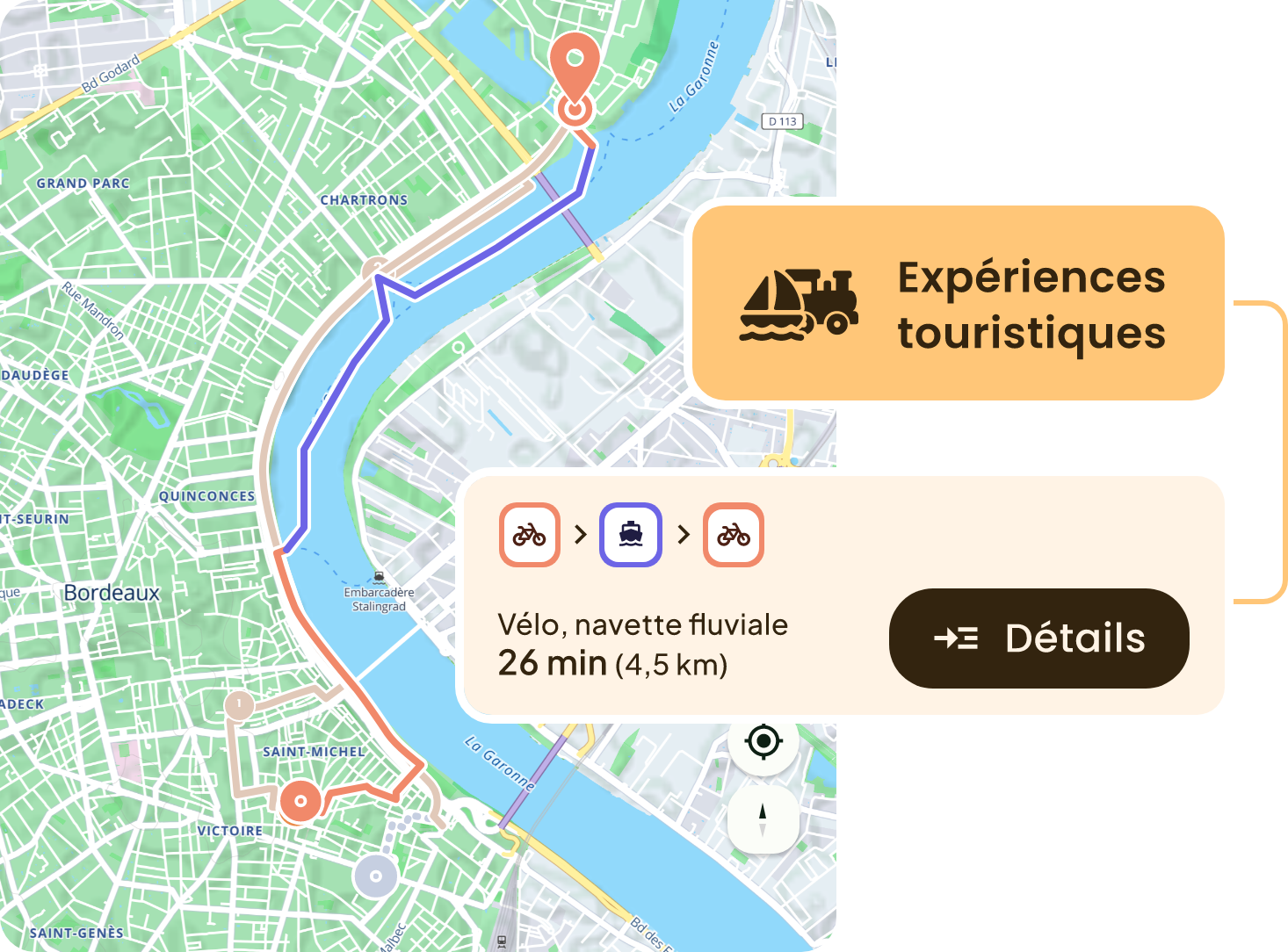
Now imagine you’re on vacation in La Rochelle… Freshly arrived, you’re eager to explore the city at your own pace. Parc Charruyer is calling your name, but the fast transport routes offered by the city aren’t quite what you’re looking for. You’re hoping to discover other points of interest along the way and experience the city at your own rhythm.
That’s when your route becomes a tourist itinerary, and it’s time for tourist-friendly modes of transport to step in: river shuttles, funiculars, and other unique options. But ideally, you’d want a full overview of all these slightly unconventional transport modes. And that’s exactly where Tourism MaaS comes in.
Loopi’s Tourism MaaS is the only one truly designed for tourism. As we’ve seen, traditional MaaS falls short when it comes to vacationers who want to take their time. It only includes standard modes of transport, relying on data shared by operators who are required to provide it.
But that’s the gap—there’s a lack of data on tourist transport modes, which prevents offering a truly rich experience to travelers. This is where Tourism MaaS changes the game!
By including tourist modes of transport like river shuttles, funiculars, and more, Tourism MaaS allows vacationers to turn their journey into a true travel experience. It reshapes travel habits by encouraging the use of soft mobility… even on vacation!
A shared system built on perfect collaboration
Whether traditional or tourism-oriented, MaaS requires data sharing to function properly. The system must have access to territorial information to understand the state of the transport network, as well as data from public transport services operating in the area. Since 2019, the Mobility Orientation Law has simplified this process by requiring conventional transport operators to share their data. This data must be available, secure, reliable, and compliant with GDPR regulations.
To comply with this data-sharing requirement, transport services are equipping themselves with Operational Support and Passenger Information Systems (SAEIV). These tools include guidance systems to assist drivers, stop information, and scheduled departure times.
Essential for powering MaaS, they make it possible to provide real-time information.
To broadcast this information, transport networks use passenger information systems (SIV), also known as onboard audio and visual information systems. In concrete terms, these are the display screens, loudspeakers, or destination signs found on buses, trams, and metros. Increasingly dynamic thanks to advances in SAEIV, these SIV systems inform users in real time about transport conditions, making their travel experience smoother and more enjoyable.
This real-time responsiveness is crucial to the success of MaaS. Since the 2019 law, the challenge is no longer about having the data, but about keeping it continuously up to date.
“Isn’t cold data starting to warm up given how fast it’s evolving?”
Transport information must be regularly updated to ensure tools are optimized.
Thus, MaaS will reach its full potential only if all stakeholders unite and collaborate in this data sharing.

Different needs = different solutions
Traditional MaaS: The answer to the classic itinerary
Let’s briefly recap what a classic itinerary is. These are the daily trips we all know: regular commutes to work or other frequent journeys. Typically, they involve using a private car or urban public transport. The goal of such an itinerary is to get efficiently from point A to point B.
MaaS then represents the ideal solution to optimize these itineraries. It offers users an approach that combines different modes of transport. This allows for a clear and simple intermodal itinerary, ensuring users reach their destination as quickly and directly as possible.
Tourism MaaS: The solution for tourist itineraries
However, traditional MaaS shows its limits by excluding tourist transport modes. At this point, Tourism MaaS offers great value. It aims to combine tourist routes and transport with the data present in traditional MaaS to transform travel into a true adventure.
Imagine exploring the region with ease, accessing clear and comprehensive information during your vacation. This would both reduce your carbon footprint and increase your savings in time and money.
The journey becomes a tourist experience
Thus, we can speak of genuine intermodal tourist itineraries, as all transport modes in the area are gathered on a single platform. It meets the needs of vacationers but can also be adapted for everyday users.
An itinerary calculated with Tourism MaaS will include various tourist transport modes and will pass through points of interest in the region. Longer and richer, these itineraries offer vacationers a whole new way to discover a place by turning the journey itself into a trip.
The itinerary planner includes only soft mobility modes to encourage travelers to move more responsibly. This perfectly meets the growing desire for slow tourism among vacationers.
At the same time, this tool can perfectly be used daily by selecting a fast-route option. This then reverts to traditional MaaS, catering to the needs of classic itineraries.
A tool that transforms the destination
Tourism MaaS also serves as a tool for destinations by turning the journey into an immersive tourist experience. By allowing travelers quick access to a wide range of services, it enriches every stage of the trip—from planning to on-site exploration.
It also plays a crucial role for travel agencies and travel planners. By leveraging collected data alongside their own production data, these stakeholders can quickly design tailor-made trips perfectly suited to their clients’ needs and preferences. This ability to personalize travel experiences not only offers great flexibility but also guarantees a customized trip optimized for each traveler’s requirements.
In summary, Tourism MaaS positions itself as an essential ally both for tourist destinations aiming to boost their appeal and for travel professionals seeking to offer unique experiences.
For all these reasons, our Tourism MaaS prototype is one of the key projects we’re working on at Loopi. Thanks to our progress, we’ll soon be able to launch the demo phase and offer a new way to travel in the Charentes!
